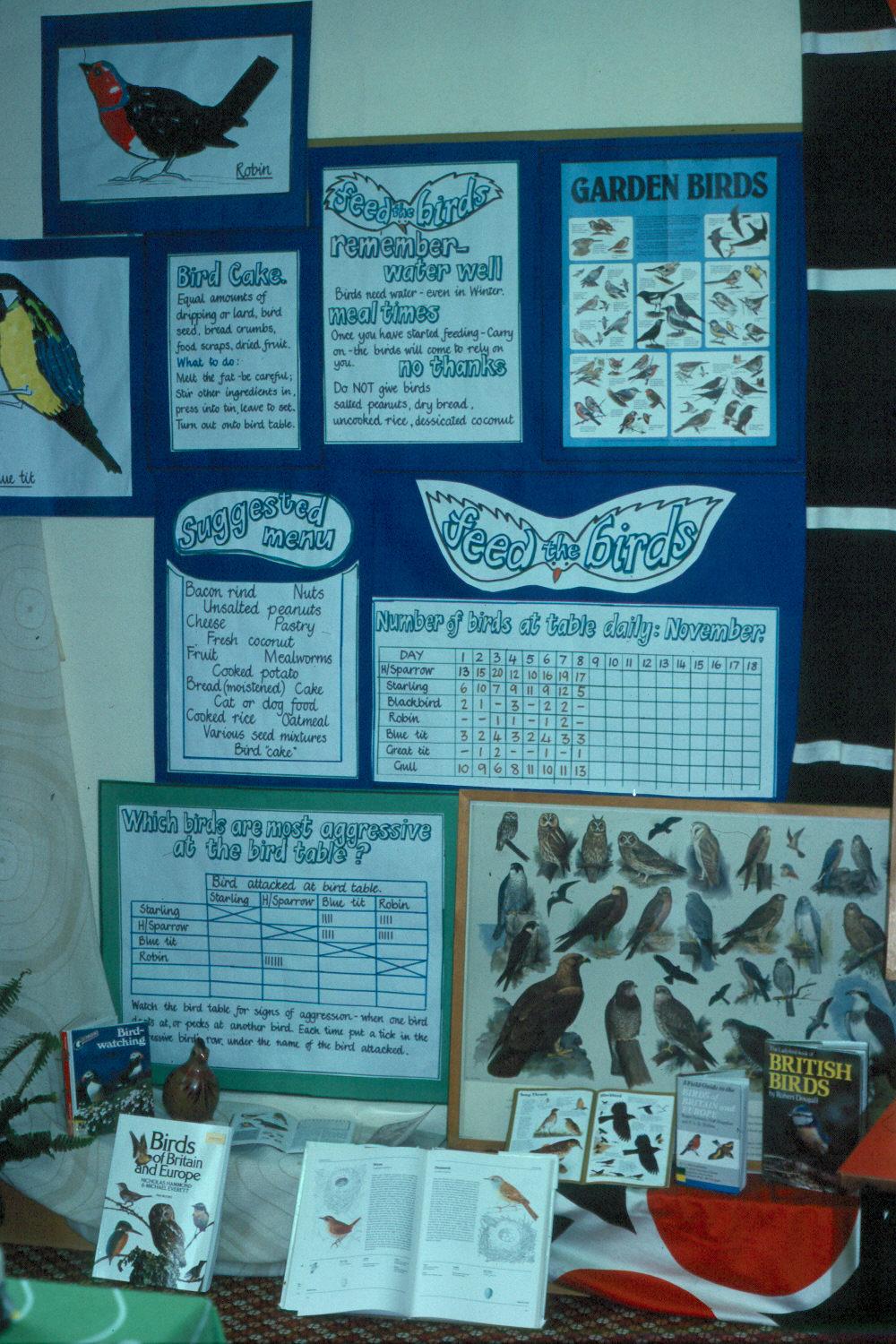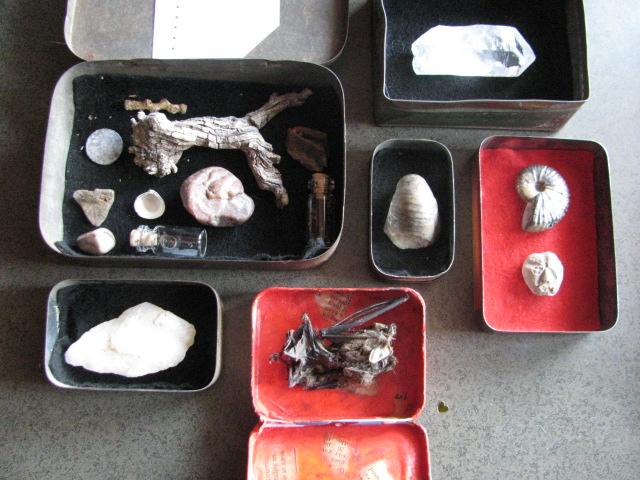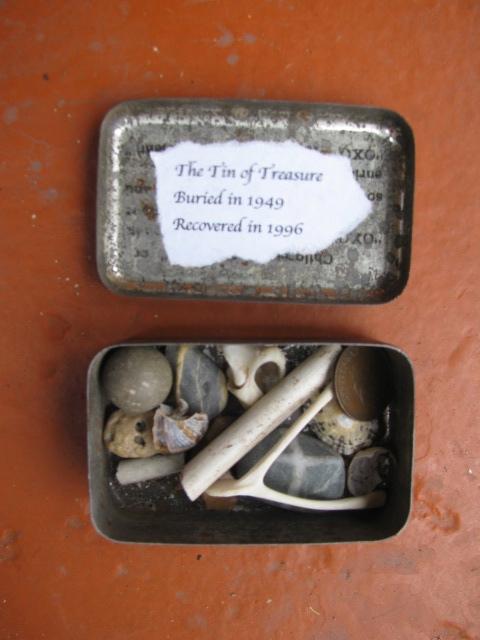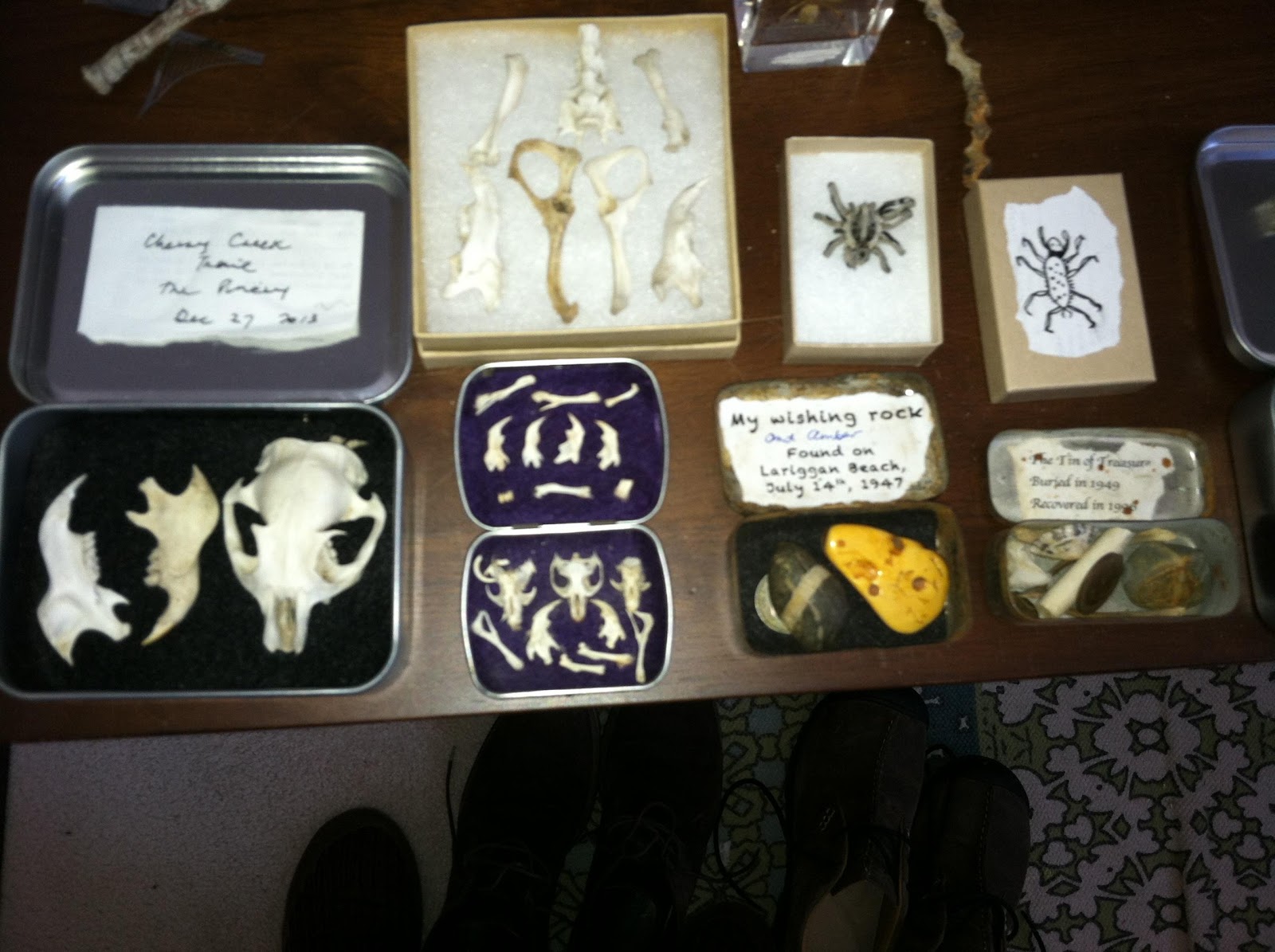Come into the Garden, Maude…………….
Drawing by Antonia Bottinelli Age 9 (Used with Antonia’s permission )
I left my classroom teaching position in the summer of 1967 to work as science advisor
to the 325 public elementary schools in the Leicestershire Education Authority.
to the 325 public elementary schools in the Leicestershire Education Authority.
My role focused on promoting, encouraging and supporting teachers’ classroom
environmental science, similar to what I did in my classroom.
environmental science, similar to what I did in my classroom.
This journal entry was made in the early summer of 1967, at the end of an environmental
education workshop with forty elementary school teachers in a former one-room school
building in the canal village of Foxton that I converted into a meeting place and base for
environmental science - for teachers and their kids.
education workshop with forty elementary school teachers in a former one-room school
building in the canal village of Foxton that I converted into a meeting place and base for
environmental science - for teachers and their kids.
September 1967 - At the end of one of my pond-dipping science workshops for
teachers in the canal at Foxton Field Study Centre, we put our microscopes,
magnifying glasses, and white dishes to one side and talked about what we had
discovered throughout the day.
teachers in the canal at Foxton Field Study Centre, we put our microscopes,
magnifying glasses, and white dishes to one side and talked about what we had
discovered throughout the day.
The conversation soon shifted to what science activity was and what wasn’t going on in
their classrooms. Some of the teachers, especially those working with six and
seven year-old children, I knew, were comfortable teaching science, some working with
older children certainly weren’t.
their classrooms. Some of the teachers, especially those working with six and
seven year-old children, I knew, were comfortable teaching science, some working with
older children certainly weren’t.
One teacher, sitting at the back of the room, told me and the class what happened
when she set up a science table for the first time and asked her 7 year olds to draw a
garden worm.
when she set up a science table for the first time and asked her 7 year olds to draw a
garden worm.
A little girl, with wide questioning eyes, put up her hand and said: "I've never seen a
worm, Miss. Don’t have a garden. How big are they? Are they like snakes?
worm, Miss. Don’t have a garden. How big are they? Are they like snakes?
Do they bite? “
The other teachers smiled knowingly – and I was reminded of the story I heard
somewhere of the young boy who was flabbergasted during a field trip when he saw a
cow being milked on his first-ever visit to a farm. His only experience with milk was in
bottles delivered on his doorstep by the milkman each morning.
somewhere of the young boy who was flabbergasted during a field trip when he saw a
cow being milked on his first-ever visit to a farm. His only experience with milk was in
bottles delivered on his doorstep by the milkman each morning.
This isn't so surprising, is it, when you think about it? If you live in a high-rise apartment
building or a house without a garden, you don't have many encounters with worms or cows.
building or a house without a garden, you don't have many encounters with worms or cows.
But so what? Would it matter if our children grew up not knowing about cows and worms?
What relevance have the lives and activities of cows and worms to the urban child who
lives in a concrete environment? And, taking this further, does it matter that adults
view many small creatures with distaste and pass on their prejudices to their children?
After all, isn’t it true that smoldering beneath the surface of many of us are hostile
attitudes to nature. Which one of us hasn't trapped and killed a mouse, stepped on a
snail, crushed a spider, or swatted a fly?
What relevance have the lives and activities of cows and worms to the urban child who
lives in a concrete environment? And, taking this further, does it matter that adults
view many small creatures with distaste and pass on their prejudices to their children?
After all, isn’t it true that smoldering beneath the surface of many of us are hostile
attitudes to nature. Which one of us hasn't trapped and killed a mouse, stepped on a
snail, crushed a spider, or swatted a fly?
Well, I think it does matter.
Isn't it important that all children experience first-hand the delights of the natural world and to learn about familiar living things that share the world with us? As teachers, shouldn't we provide the children in our care with the opportunity to discover the natural world for themselves, to learn to enjoy it - and to appreciate our dependence upon it? Won't that subsequently encourage them to care for it?
For many teachers of young children, nature (creepy crawlies, birds, rocks, fossils,
weather patterns, for example) is an invaluable aid for educational purposes, an
inspiration for discussion, science, language, art, music, and writing. They know that
just outside the door is a huge outdoor classroom, a place to learn about and to learn in.
It needn't be a dense woodland, rich meadow, pond or clear mountain stream (they help,
though!).
weather patterns, for example) is an invaluable aid for educational purposes, an
inspiration for discussion, science, language, art, music, and writing. They know that
just outside the door is a huge outdoor classroom, a place to learn about and to learn in.
It needn't be a dense woodland, rich meadow, pond or clear mountain stream (they help,
though!).
A schoolyard, however sterile, is home to a myriad of interesting small animals.
Turn over a brick and you find woodlice, slugs and snails. Standing in silky webs are
spiders, hiding under dead leaves are earwigs, centipedes and millipedes.
spiders, hiding under dead leaves are earwigs, centipedes and millipedes.
Lurking inside cracks in the wall are tiny beetles.
of time. If we create appropriate temporary classroom homes for small creatures (what
I call MiniHotels), think of what our children could learn from observing creepy crawlies
at close range.
Woodlice, for example, would be ideal creatures to keep in the classroom. They’re easy to
find and they’re so interesting! Female woodlice, for example, mature when they are
about two years old and rear their young in a brood pouch under their bodies. When the
offspring are ready to emerge, the female stands still, and stretches her front legs out
stiffly so that the young can crawl down to the ground.
And snails!
What wonderful creatures they are, and so easy to keep for a few days.
As are spiders, and worms,
and millipedes and slugs………………………….
find and they’re so interesting! Female woodlice, for example, mature when they are
about two years old and rear their young in a brood pouch under their bodies. When the
offspring are ready to emerge, the female stands still, and stretches her front legs out
stiffly so that the young can crawl down to the ground.
And snails!
What wonderful creatures they are, and so easy to keep for a few days.
As are spiders, and worms,
and millipedes and slugs………………………….
If children are encouraged to find, watch, and understand how small creatures live,
won't it help them learn to live in harmony with nature and appreciate living things?
And, important for us teachers, doesn't a worm or a spider give us so many ways of
developing classroom skills?
won't it help them learn to live in harmony with nature and appreciate living things?
And, important for us teachers, doesn't a worm or a spider give us so many ways of
developing classroom skills?
Try it and watch how it impacts the children!
And your classroom!!

1969





And your classroom!!
1969
The Science Table, an integral part of my teaching
The science table, placed close to a wall that is covered with display paper and an electrical outlet near the floor, has always been a significant area in my elementary and middle school classrooms.
Why?
- Because a science table helped me create and sustain the appropriate interesting environment in which to build a student community of active, inquisitive learners.
- Because a well-displayed, interactive science table appealed to my students’ sense of curiosity and promoted interest, classroom discussion and team/individual research.
What is a science (aka Nature Table, Curiousity Table) table?
It’s a table space first owned by me, then maintained and co-owned by me and the class. It’s a table on which were displayed Mother Nature’s delights and mysteries from the first day of school on. The items (rocks, fossils, shells, feathers, bones, plants, whatever catches one’s eye) were artistically displayed, labeled, and accompanied with questions, pictures, reference books, magnifying glasses and a binocular microscope.
From the first day of school, I started each the day with a science table ritual.
On Day One, first thing in the morning, I told everyone what’s on the science table, inviting the students, at the appropriate time, to take a closer look at the things that I had found when out walking
I then invited them, if they wished, to volunteer to look after the table.
At the end of the day, I gathered my students around me they set off for home. I handed everyone a tin, with the challenge:
“Hey, see what you can find outside your home……..something really cool that fits inside the tin. Bring it in tomorrow and show everyone.”
I called the tins pocket museums.
IT always worked! The next morning, students shared their treasures.
Once this routine was established, I ensured the table’s contents constantly changed,
either by me or the students bringing in different interesting delights in their pocket
museums.
The science table never failed to brighten up my classroom - and ignited my kids' curiosity.
…………………………………………………………………………………………………………………………
John Paull 1967
That was a long time ago……..over 50 years, in fact…………...and how times have changed,
certainly in the ways that young children can access information about the world of
science.
certainly in the ways that young children can access information about the world of
science.
Not long ago I was in a classroom of fifth graders, asking the question,
“Do owls have ears? I ask because they seem to hear when a mouse or vole wriggles
in the grass below their perching spot in the tree.”
in the grass below their perching spot in the tree.”
An 11 year old girl, sitting next to me, looked at me, smiled, and said,
“Hey, Mr. Paull, ask your phone!”
“What do you mean? “ I asked.
She took her Iphone out of her pocket, looked at it, pressed a button , and asked,
“DO OWLS HAVE EARS?”
The Iphone answered in the affirmative………….
The times, they are a changing…………..
JP April 2016
2009 = Response from a teacher ed. student of mine:
Can you afford nature?
In Come into the garden, Maude, John Paull writes that children are often not exposed to the nature directly around them. The author continues on to explain that exposure to nature, to inquiry and investigation of the world around us, not only excites and interests children but also instills a value of living things and desire to protect the earth to provide for a safe habitat and planet.
John Paull recommends that teachers integrate natural investigations of living things in their classrooms to give children interesting and meaningful learning experiences.
Perhaps the differences in children's environmental 'noticings' is not because the children in one schools haven't seem the same bugs, animals and events, but because they haven't been conditioned to notice them.
Pehaps they suffer from what some call 'Nature Deficit Disorder.' They spend 7 hours and 45 minutes of their 8 hour school day indoors, and then return home to sit inside watching the telly or play video games, go to bed, and do it all again the following day. We question and scratch our heads why 7 year olds have unharnessed energy in the classroom but would'nt it be stranger if they could actually focus? Not to mention existing research in developmental appropriateness, but I assume that a simple study of children's ability to concentrate in a classroom if they have two 30 minute recess periods verses one 15 minute recess would show great improvement in children's focus.
As teachers, we face challenges to assuage this obvious 'disorder', particularly in low-income, low-performing schools, where the need is especially high. Contrary to my above stated opinoion, the school administrators in the district vI intern ahve decided that in an effort to increase test scores they ought to take awayb recess time. I suppose they haven't taught in a classroom..... They would would know that after 'recess time', don't bother asking the kids to read quietly by themselves or score well on a spelling test. They also seem to have forgotten their own childhood where there was great valuen in going outdoors. Or, maybe, like me, they just took for granted that observing the natiural world just 'happens'.
A further challenge is that the school administarators have strictly prohibited teachers from taking their classes oiutside during the school day!
So, why not, then, bring the outdoors indoors, instead, as Paull suggests? Well, that5 possibility has also been outruled by the adminsistration. What an obvious disruption of learning!!
The school administration must have resoned. I suppose that in a standards and test-driven curriculum, scientific observations surelyonly have value if they come from a book....... In this case, our adminstrators have failed to notice that along with this 'science froma book' trend has been the concurrent of the United States falling behind in science innovation to other countries
Thomas Friedman, in his book, The World is Flat, suggests that we bring science investigation back to make up for increasing shortcomings. And it wouldn't be hard either. Simply keep a box of spiders and magnifying glasses in the classroom. But, then, unfortunately, I wouldn't have a job anymore, and the kids who need me woiuldn't have a teacher.
The children in X school, in the same district, still have two 30 minute recesses. They have animals and critters in their classrooms. It seems as if sometimes the children spend half the day exploring in and out of the classrooms. They, too, have life besides humans in their classrooms. They, however, don't suffer from low-test scores. They don't suffer from poverty, and they are not 90%Hispanic and Spanish-speaking.
So, I'm left to questioon: is underexposure to the environment and its inhabitants, a form of discrimination?
Cayla Chavez Murphy
Teacher Candidate
2008-2009.
Can you afford nature?
In Come into the garden, Maude, John Paull writes that children are often not exposed to the nature directly around them. The author continues on to explain that exposure to nature, to inquiry and investigation of the world around us, not only excites and interests children but also instills a value of living things and desire to protect the earth to provide for a safe habitat and planet.
John Paull recommends that teachers integrate natural investigations of living things in their classrooms to give children interesting and meaningful learning experiences.
Perhaps the differences in children's environmental 'noticings' is not because the children in one schools haven't seem the same bugs, animals and events, but because they haven't been conditioned to notice them.
Pehaps they suffer from what some call 'Nature Deficit Disorder.' They spend 7 hours and 45 minutes of their 8 hour school day indoors, and then return home to sit inside watching the telly or play video games, go to bed, and do it all again the following day. We question and scratch our heads why 7 year olds have unharnessed energy in the classroom but would'nt it be stranger if they could actually focus? Not to mention existing research in developmental appropriateness, but I assume that a simple study of children's ability to concentrate in a classroom if they have two 30 minute recess periods verses one 15 minute recess would show great improvement in children's focus.
As teachers, we face challenges to assuage this obvious 'disorder', particularly in low-income, low-performing schools, where the need is especially high. Contrary to my above stated opinoion, the school administrators in the district vI intern ahve decided that in an effort to increase test scores they ought to take awayb recess time. I suppose they haven't taught in a classroom..... They would would know that after 'recess time', don't bother asking the kids to read quietly by themselves or score well on a spelling test. They also seem to have forgotten their own childhood where there was great valuen in going outdoors. Or, maybe, like me, they just took for granted that observing the natiural world just 'happens'.
A further challenge is that the school administarators have strictly prohibited teachers from taking their classes oiutside during the school day!
So, why not, then, bring the outdoors indoors, instead, as Paull suggests? Well, that5 possibility has also been outruled by the adminsistration. What an obvious disruption of learning!!
The school administration must have resoned. I suppose that in a standards and test-driven curriculum, scientific observations surelyonly have value if they come from a book....... In this case, our adminstrators have failed to notice that along with this 'science froma book' trend has been the concurrent of the United States falling behind in science innovation to other countries
Thomas Friedman, in his book, The World is Flat, suggests that we bring science investigation back to make up for increasing shortcomings. And it wouldn't be hard either. Simply keep a box of spiders and magnifying glasses in the classroom. But, then, unfortunately, I wouldn't have a job anymore, and the kids who need me woiuldn't have a teacher.
The children in X school, in the same district, still have two 30 minute recesses. They have animals and critters in their classrooms. It seems as if sometimes the children spend half the day exploring in and out of the classrooms. They, too, have life besides humans in their classrooms. They, however, don't suffer from low-test scores. They don't suffer from poverty, and they are not 90%Hispanic and Spanish-speaking.
So, I'm left to questioon: is underexposure to the environment and its inhabitants, a form of discrimination?
Cayla Chavez Murphy
Teacher Candidate
2008-2009.
No comments:
Post a Comment